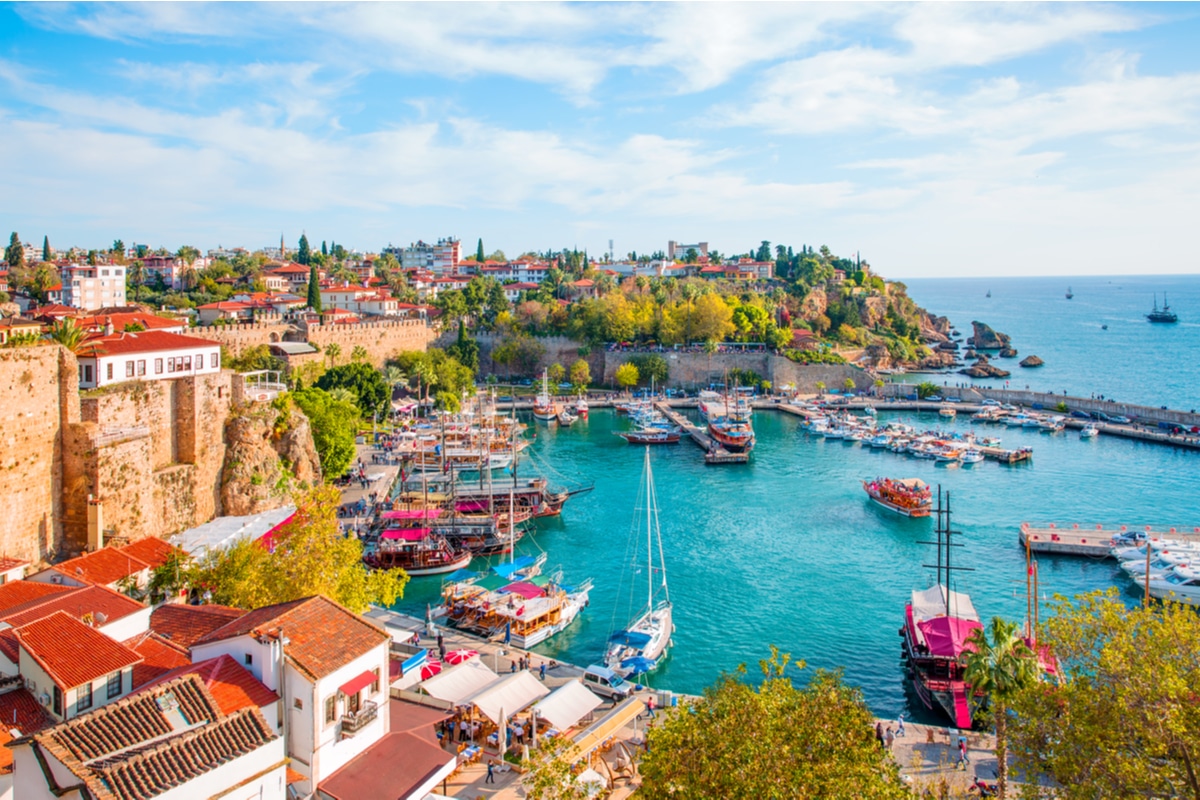Yivli Minare Mosques
The Alaaddin Mosque, named after its builder but better known by its name Yivli Minare Mosque, is an Islamic place of worship in the center of the old city of Antalya. The mosque and its minaret have a centuries-long, eventful history.

The history of the mosque
In 1207, right after the Seljuks conquered Antalya, they started building a mosque called Ulu Cami, but it was soon destroyed during the rule of the Lusignans (1361-1371), a French noble family. As a replacement, in 1373, at the end of the Lusignans' rule, the Yivli Minare Mosque was built on the foundations of a Byzantine church, which can still be admired there today.
The Minaret
The free-standing minaret of the mosque, after which it also bears its epithet, dates back to the time of Seljuk rule (around 1226) and thus originally belonged to the Ulu Cami. Visitors can enter the minaret through a door on the north side. 90 steps lead up inside it to the balcony. It is 38 meters high and has eight characteristic vertical furrows (Yivli Minare = furrowed minaret), which make it look as if it consists of eight individual columns. The minaret is completed by a cylindrical part above the balcony and a conical roof. It is made of bricks and rests on a stone square foundation. Part of the minaret is covered with magnificent dark blue tiles.
Today, the minaret is considered an important landmark of Antalya and a symbol of the city's rich history.
The Mosque
The mosque itself has six domes resting on arches, which in turn are supported by 12 columns. The columns are recycled remains of ancient Roman structures. The mosque is one of the oldest multi-domed buildings in Anatolia. Other parts of the building complex include a madrasa, a garden and two mausoleums, the "Zincir Kıran Türbesi" and the "Nigâr Hanım Türbesi". Today, the former madrasa houses the Ethnographic Museum of Antalya, which exhibits, among other things, clothing, kitchen utensils, embroidery and nomad tents, but of course also interesting facts about the history of the mosque. The museum was opened in 1974 and is definitely worth a visit.


